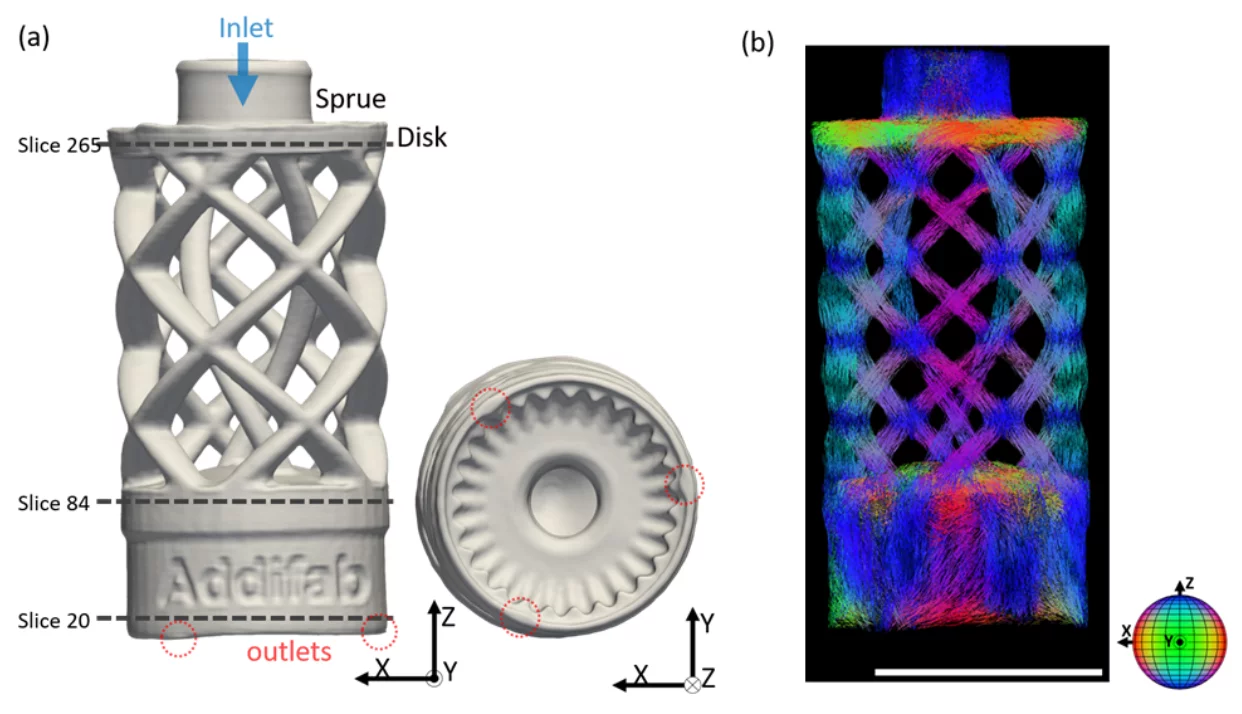Prediction of the mechanical properties dictated by the local microfiber orientation is essential for the performance characterization of fiber-reinforced composites. Typically, tomographic imaging methods that provide fine spatial resolution are employed to investigate various materials' local micro- and nano-architecture in a non-destructive manner. However, conventional imaging techniques are limited by a substantial trade-off between the structure size of interest and the accessible field of view (FOV). Researchers from the TOMCAT beamline at Paul Scherrer Institut, Xnovo Technology ApS, and the Technical University of Denmark have demonstrated the potential of X-ray scattering tensor tomography for industrial applications by characterizing the microstructure of a centimeter-sized industrially relevant freeform injection molding fiber-reinforced composite sample (see Figure). This emerging technique provides unprecedented access to microstructural information over centimeter-sized sample volumes paving the way towards its potential integration as an invaluable tool, for instance, in the fiber-reinforced-composite (FRC) industry. The obtained fiber orientation and anisotropy information over statistically relevant large volumes can be used to predict the mechanical properties of final products, optimize production parameters, and improve fiber injection molding simulation frameworks. The work is published in Composites Part B: Engineering on 15 March 2022.
Original Publication
Kim J, Slyamov A, Lauridsen E, Birkbak M, Ramos T, Marone F, et al., Macroscopic mapping of microscale fibers in freeform injection molded fiber-reinforced composites using X-ray scattering tensor tomography, Composites Part B: Engineering. 2022; 233: 109634 (11 pp.).
Contacts
Forschungsstrasse 111
CH-5232 Villigen
